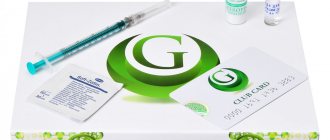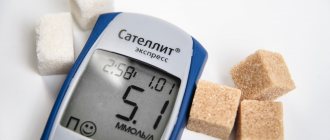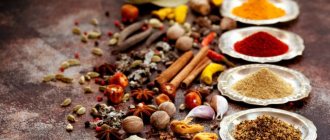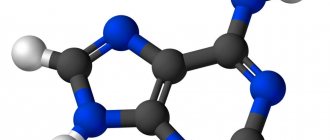How to make iron better absorbed
To increase hemoglobin, it is not enough to simply include iron-containing foods in your diet. It is important that the nutrients are absorbed as much as possible and are beneficial. To do this, you should know which products can and cannot be combined with each other.
Iron is best absorbed in the presence of vitamins C and A. That's why seafood with lemon is not only tasty, but also incredibly healthy. A few drops of lemon can be added to salads and other dishes. Almost all fresh vegetables and fruits, such as bell peppers, are rich in vitamin C. Vitamin A is found in fish, oil, vegetables and orange fruits.
It is important to ensure that the body receives folic acid, which takes part in the synthesis of red blood cells. Therefore, you should regularly eat beef, green salad, avocados, legumes, rice, peanuts and other foods high in folic acid.
But calcium and casein (milk protein) reduce the absorption of iron, so you should not consume dairy and fermented milk products and cheeses along with vegetable and meat dishes. Wheat and other grains have a negative effect on the absorption of iron. So it’s better to eat meat without bread, and use vegetables rather than pasta as a side dish. Among the foods that can provoke hemoglobin deficiency: tea, coffee and persimmons (contain tannins), bread, soy, canned food, soda, processed cheese. Therefore, you should not abuse them.
Types of free hemoglobin
The bulk of free hemoglobin is concentrated in the human liver, the rest is in the plasma. There are two types of this protein:
- Fetal. It is diagnosed only in the blood of newborn babies. By 10–12 months, its structure changes to normal, the concentration decreases from 80% to 1%.
- Glycated. The protein is formed when it binds to glucose molecules. Based on its amount in the analysis, doctors can accurately identify diabetes mellitus at an early stage.
The level of hemoglobin is affected not only by the patient’s age: during the day it changes by 5–6%, reacts to lack of sleep, fatty or sweet foods, and the person’s stressful state. But the indicator is not used in the comprehensive diagnosis of chronic diseases.
Important! The level of free hemoglobin shows how harmoniously and correctly the patient’s organs and systems work.
It helps to identify hidden inflammation and disorders of intravascular hemolysis, heart valve pathologies, and atherosclerosis.
High hemoglobin: causes, treatment
If hemoglobin levels in the blood exceed the norm indicated in the table, then this condition is also a reason to consult a doctor. In this case, the patient may have symptoms such as:
- problems in the functioning of the genitourinary system;
- drowsiness;
- yellowish skin;
- poor appetite;
- decreased vision;
- oncology;
- chronic heart failure;
- high fatigue.
The reasons for such a violation include:
- diabetes mellitus (the disease is treated by an endocrinologist);
- increased blood viscosity;
- erythrocytosis;
- excess vitamin B12/B9;
- chronic obstructive pulmonary diseases.
Can there be too much iron in the body?
Maybe. An excess of iron is just as harmful to the body as its deficiency. It causes fibrosis of organs and tissues. The pancreas, liver and heart are most often affected. However, it is impossible to achieve an excess of iron through diet alone. The pathology is often due to genetic predisposition and improper or uncontrolled use of iron-containing drugs.
What is an increase in hemoglobin called?
An increase in the number of red blood cells and an increase in hemoglobin is called erythrocytosis. Its characteristic symptoms: nosebleeds, headaches and dizziness, fatigue. Erythrocytosis, in turn, can be a sign of various diseases, which only a doctor can determine.
What does it mean if hemoglobin is elevated?
High hemoglobin levels can be caused by dehydration, smoking, lung cancer, heart disease and other pathologies. Elevated hemoglobin sometimes indicates the presence of a rare disease - polycythemia. When this happens, the body produces too many red blood cells, which can lead to blood clots, heart attacks and strokes. This is a very serious disease that is important to identify and control early throughout your life.
Which foods contain a lot of iron to increase hemoglobin?
- Dried mushrooms.
A product that can significantly increase iron levels in the body. Just 50 g of dried mushrooms per day will help replenish the iron content in the blood. Not everyone can eat them every day, but periodically including mushrooms in your diet is very useful.
- Red meat.
The dark color of the product indicates a high iron content. For example, a steamed beef cutlet weighing 100 g contains approximately 2.7 mg of iron - almost 15% of the daily requirement. For comparison: in the same turkey cutlet the amount of iron is about 0.7 mg.
- Pumpkin seeds.
An excellent source of iron: 200 g of the product easily covers the daily requirement. But you shouldn’t get carried away with pumpkin seeds: they are very high in calories and can cause disruptions in the gastrointestinal tract. But a small handful of seeds in a salad or hot dish will be very useful.
- Offal.
In terms of the content of iron and other useful microelements, offal easily surpasses meat. 100 g of cooked beef liver contains 36% of the daily iron requirement.
- Buckwheat and rolled oats.
A couple more important foods that can boost your iron levels. A 100 g serving of buckwheat or rolled oats will provide the body with approximately 25% of the beneficial element.
- Legumes.
An essential part of the diet for vegetarians and vegans, legumes are not only rich in iron, but also very filling. A cup of boiled lentils, for example, will cover approximately 35% of the daily requirement for iron, and a glass of boiled beans will cover 20%.
- Dark chocolate.
Perhaps the favorite product of those who seek to increase their hemoglobin levels. The main thing is to choose chocolate with a cocoa content of at least 70% and eat at least ¼ bar (25 g) per day. This will help compensate for about 17% of the daily iron requirement and give you a good mood due to the “happiness hormone”.
For iron deficiency and low hemoglobin, the following foods are also recommended: eggs (especially the yolk), quinoa, almonds, walnuts, peeled apples, pomegranate, grapes, raspberries, rose hips, beets, freshly squeezed fruit and vegetable juices, seafood - caviar, fish, oysters It is important that the diet is balanced and that foods contain a variety of nutrients and vitamins.
Causes and symptoms of low hemoglobin
Iron deficiency anemia is a fairly dangerous and common condition in which the blood cell content is less than the lower limit of normal.
In this case, the patient may have the following symptoms:
- vertigo;
- severe fatigue;
- change in taste preferences;
- frequent headaches (read how to get rid of headaches in this article);
- dyspnea;
- decreased blood pressure;
- decreased muscle tone;
- brittle nails/hair.
The danger of decreasing hemoglobin levels is that the brain and other internal structures do not receive the required amount of oxygen, and therefore cease to function correctly. As a result, associated health problems appear that significantly affect the quality of life.
The main reasons for a decrease in hemoglobin in the blood:
- poor nutrition (frequent diets, lack of vitamins, etc.);
- chronic gastritis (here you can find effective tablets for stomach pain)
- chronic pyelonephritis;
- arthritis;
- hepatitis;
- dysbacteriosis;
- tuberculosis;
- blood loss (after operations, injuries).
Functional purpose of hemoglobin
Free or plasma hemoglobin is the main protein in human blood. It is part of red blood cells and plays a major role in the transfer of oxygen to tissues. Additionally, it accumulates carbon dioxide molecules, clearing the plasma of accumulated decay products, stimulating the process of regeneration of cells of internal organs and systems.
In tests, free hemoglobin is designated by the formula Hb. With its deficiency, the human body experiences oxygen starvation. This manifests itself in exacerbation of chronic diseases, deterioration of well-being, disruption of the brain and nervous system. Even with a deviation of 15-25 units, a person feels weak, drowsy, and complains of decreased concentration and memory.
How to increase hemoglobin in the blood
It is important to control the ratio of all components of the blood fluid. Since its minimization is a pathological condition that will require certain treatment, and it does not always go away quickly and successfully. As therapy, doctors can take measures such as:
- blood transfusion (used in extreme cases, when the level is greatly reduced and drug treatment fails);
- prescription of vitamins (B9 and B12);
- taking iron-containing medications (in the form of tablets, suspensions or injections);
- drawing up a special menu (iron-enriched foods are added to the diet - meat, liver, herbs, vegetables, buckwheat, dried fruits, seafood, chocolate, etc.)
Therapy to increase hemoglobin levels in the blood is prescribed by a doctor during a personal appointment or online consultation. You can consult online or consult with a service doctor.
Why does hemoglobin fall?
Hemoglobin cannot decrease, much less drop sharply, without reason. They can be serious illnesses or situations that cause blood loss: operations, injuries, wounds, internal and external bleeding. In women, a short-term decrease in protein is possible during menstruation, which lasts 5 days or more. The most common causes are lack of iron, folic acid and vitamin B12. However, low hemoglobin can also be a consequence of serious pathologies.
Causes of low hemoglobin:
- failure of the endocrine system;
- gastrointestinal diseases, intestinal pathologies;
- kidney disease;
- problems with the circulatory system;
- pneumonia, tuberculosis, hepatitis and other serious diseases;
- gastritis and neoplasms in the digestive organs;
- oncological diseases;
- exhausting long-term diets, unhealthy diet;
- vitamin deficiency and lack of vitamins and minerals;
- severe stress or prolonged depression;
- multiple pregnancy.
As you can see, the causes of low hemoglobin can be extremely serious and dangerous to health, and therefore this indicator must be monitored regularly and, if necessary, quickly increased.











